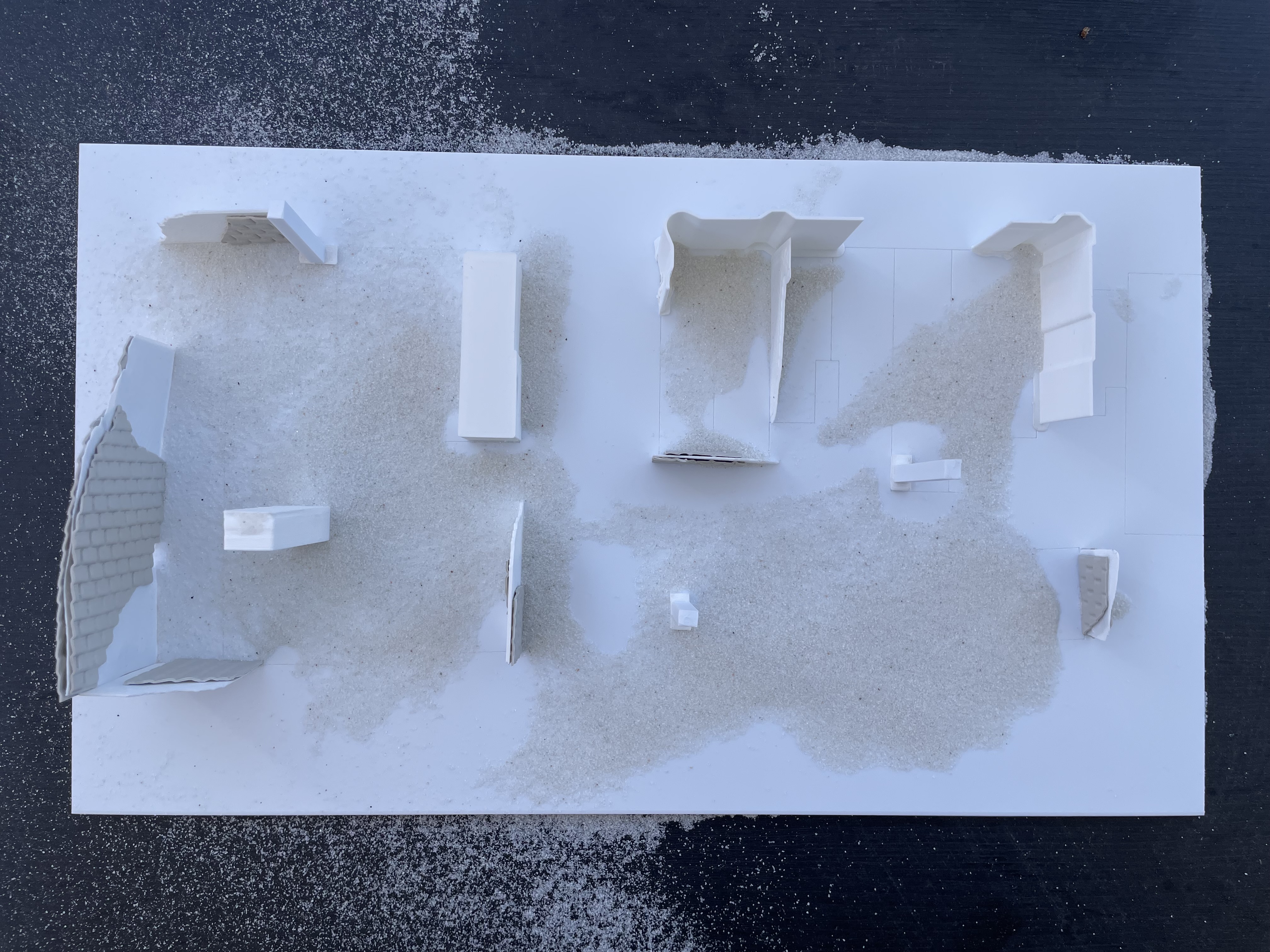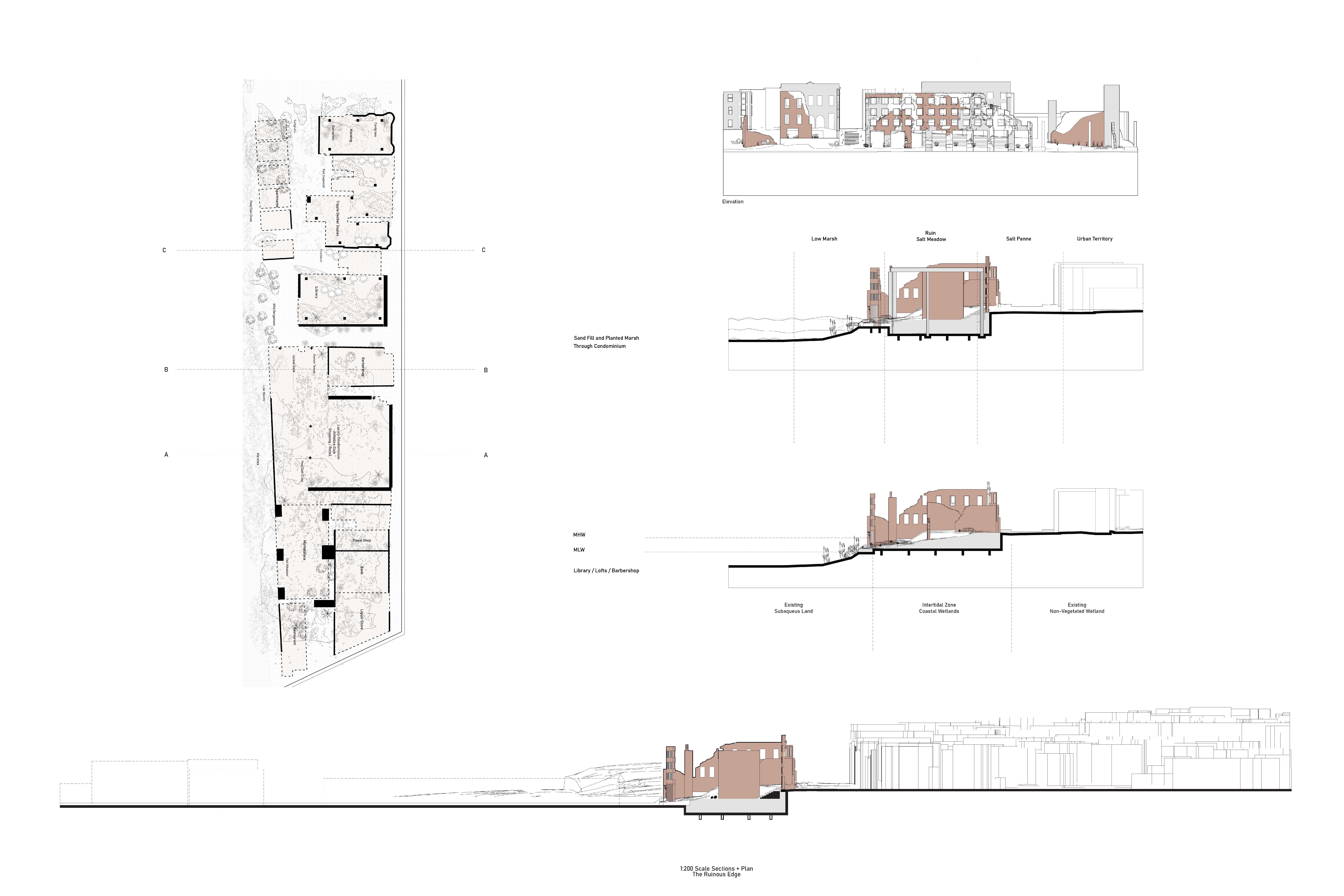1. The Ruinous Edge: Urban Assemblages and Frameworks


RE / 2022
From The Ruinous Edge: Urban Assemblages and Frameworks
The Ruinous Edge and the de-industrialization of inner-city environments shares concerns over postcolonial orderings of cities producing an extended perspective of modern urban buildings, which included the fall of leftover fragments that might be remnants of destroyed or demolished buildings. This edge, in case, has been carried by sea level rise exposure. Abandoned old materials are needed to re-invent the cultural life of inner city environments and seem to focus on high-speed capitalism and can view the development of gentrification. Gentrification in the city means continuing to polish the refinement of the urban environment-- for the worse. By supporting the reuse of these structures, the cultural economies of the city and cultural policies of urban planning, such as the paradigm of the “creative cities,” have proposed the regeneration of inner-city districts. The escape from the over-built work, the ruinous edge leaves a memorial and removal of capital infrastructure.
“The urban renewal in the present is no longer futuristic but nostalgic. The city reimagines its future by improving its past.”

Sea Level Rise in Maverick Square, East Boston.
![]()


Degrowth in the City: Cultural Diagram
![]()


In the age of capitalist reproduction, this project is about the un-building and deconstruction of cities that are overly populated by buildings, architecture, and infrastructure by using modern-day ruin to change a cultural context.
Maverick Square is a primarily community-based neighborhood invested in culture and diversity among Latino, Italian and Black communities. But it is currently at risk of high luxury retail development, which started in the 2000s, with rents skyrocketing at $3000 a month. Most of the institutions this neighborhood was founded on have quietly moved to organize themselves in private open spaces such as public parks, community gardens, and places of faith and worship.
The reduction of capitalism starts with an invitation to detach its walls. Deconstructing various walls, windows, and doors will open a new assembly to the landscape’s setting, while the brushed environment allows a landscape estuary to grow. The escape from the over-built world, the ruinous edge leaves a memorial and removal of capital infrastructure. Welcome to the new millennium.
The ruin offers an undoing to this capitalistic infrastructure. The obsession constrains the profession of architecture from classifying the built environment. This designed capacity of ruins declassifies and considers the account of the environment's actual material state.

Sand Study Models: Formal Studies in Estuary Placement of Growth.

Sand Study Models: Formal Studies in Estuary Placement of Growth.
Assemblages
Deconstruction is a way of replacing the cultural values of the previous building. First, defamiliarizing the building by deconstructing its historical significance changes the semiotic experience to comprehend this object like the ruinous clubs in Berlin, seemingly changing ordinary perception by maintaining its pure materials. The columns and walls become performance-based. This leads the ruin to become an open space for creativity and experimentation.


Materials are chosen: Brick and concrete stay, softer woods go. Windows are punched out. The estuary is planted as the sea washes onto the shore.
Values to consider: How these built and programmatic objects contribute to a moral, social, and cultural agency. This is not an abandonment project, as there is a difference between the abandoned and reconceptualizing as reconditioning.
1. Identifying Ruin vs. Architecture
2. Cultural Value Making
3. The memory of the Urban Ruin
4. Found estuary – a new body of water mixed with salt water from the ocean.

Plan. 1:200 Scale.

Plan and Sections.


Urban Assemblages. Soil Types.

Estuary, Plant & Animal Ecologies. Urban Assemblages.





Assemblages of Ruinous Form.